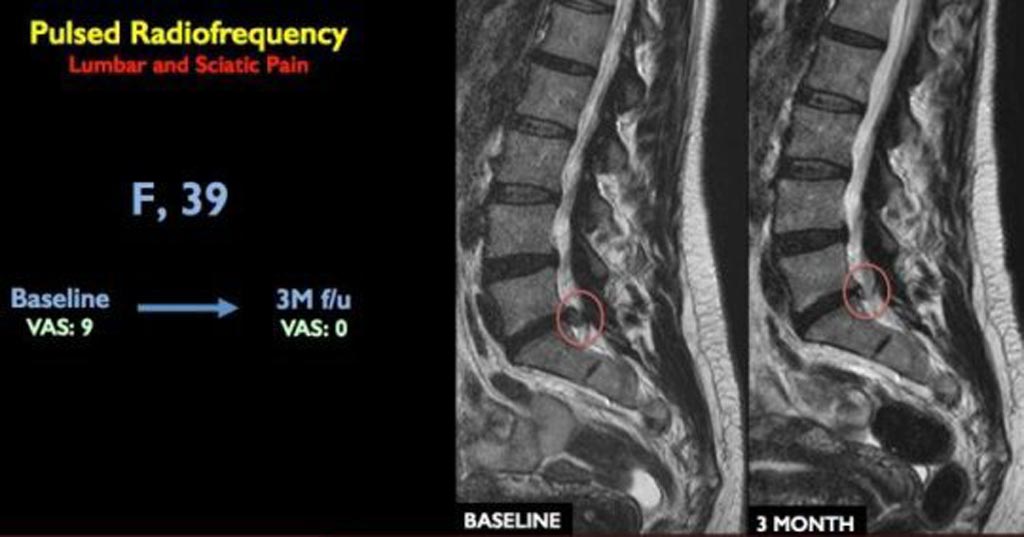Image-Guided RF Treatment Relieves Lower Back Pain
By MedImaging International staff writers
Posted on 24 Jan 2018
Computerized tomography (CT)-guided pulsed radiofrequency (RF) is beneficial for patients with acute or subacute neuro-radicular pain and sciatica, according to a new study.Posted on 24 Jan 2018
Researchers at Sapienza University (Rome, Italy) conducted a prospective study involving 80 patients who presented with acute or sub-acute neuro-radicular lower back pain (LBP) refractory to standard treatments, such as medication and steroid injections. The patients underwent a pulsed RF procedure using a 22-20 G needle-electrode with the probe tip directed to the symptomatic dorsal root ganglia (DRG) under CT guidance. Pulsed RF was administered for 10 minutes at 45V with a constant local temperature of 42°C.

Image: CT-guided pulsed RF therapy relieves Sciatica and back pain (Photo courtesy of Alessandro Napoli/ Sapienza University).
Clinical evaluation was conducted using a visual analogue scale (VAS), the Owestry disability index (ODI), and the Roland-Morris (RM) score; questionnaires were obtained at baseline and at one week, one month, and three-month follow-up. The results revealed that of the 80 patients treated, 81% were pain-free one year after a single treatment session, while six patients required a second pulsed RF session; 90% of the patients were able to avoid surgical treatment. The study was presented at the annual meeting of the Radiological Society of North America (RSNA), held during November 2017 in Chicago (IL, USA).
“There's a big gap between conservative treatments for disc compression and herniation and surgical repair, which can lead to infection, bleeding, and a long recovery period. Evolving technologies like this image-guided treatment may help a substantial number of patients avoid surgery,” said lead author Alessandro Napoli, MD, PhD. “The results have been extraordinary. Patients have been relieved of pain and resumed their normal activities within a day. With relaxation of the muscles, the distance between the vertebrae returns.”
The sciatic nerve is the largest single nerve in the body and is made up of individual nerves emanating from individual DRG in the lumbar spine, which then combine and merge to form the sciatic nerve, which runs down the back of the leg. Sciatica symptoms occur when the large sciatic nerve is irritated or compressed at or near its point of origin, usually as a result of disc compression.
Related Links:
Sapienza University














